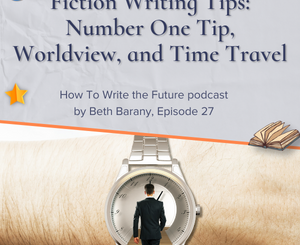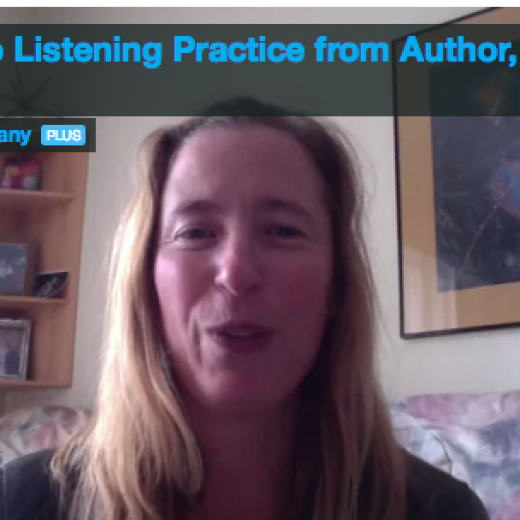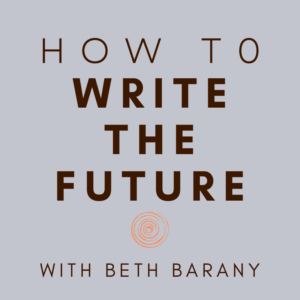What is Trademark?
Welcome to the monthly series on artist entrepreneurship. Today we focus on writers and literary law specifically and on an important issue to be aware of in today’s world — what is trademark and why is it important — from our monthly guest columnist, Kelley Way, a lawyer specializing in literary law. If you have general questions for Kelley on contracts or other aspects of literary law, be sure to comment below. Thanks!
PS. A list of books on literary law can be found here.
PPS. For more on trademarks, visit the United Stages Patent and Trademark Office.
And now for a bit of necessary legalese: Please note that this article does not constitute legal advice, and that an attorney-client relationship is not formed by reading the article or by commenting thereon.
^*^
The Trademark Principle in Trademark Infringement
While copyright is the subject most authors want to talk about, trademark is also something they often need to deal with. Authors often want to reference real-world items and companies, which typically are trademarked.
Additionally, authors with a series may want to trademark a title or name to give themselves additional protection from infringers.
So when is using a trademark acceptable, and when is it infringement?
The important thing to remember about trademarks is that a trademark exists to identify the maker of a good or provider of a service.
Trademark law centers around this principle, and if you can keep that in mind, trademark infringement laws make a lot more sense.
Like most things in law, there is a test the court goes through to decide if someone is infringing on a trademark. Fortunately, this test is not too difficult. First, the court has to decide if the trademark is protectable. This is fairly easy to decide if the trademark has been registered. (Like copyrights, registration is not required, but it is helpful.)
When in doubt, follow the principle stated above: If it easily identifies the person or company that makes the good or provides the service, it’s probably protectable.
The second factor the court looks at is whether the infringer is using the trademark in commerce. Since the point of trademark protection is so that consumers can identify the source of the product or service they are buying, there can only be infringement if someone is using the trademark to sell a product or service.
The third factor is that the infringer did not have consent to use the trademark in commerce. Like the first two factors, there are occasions where this is an issue, but most of the time it’s not hard to decide.
The hard part of this test is the last factor, the likelihood of consumer confusion. This factor has a test of its own, and if that weren’t complicated enough, there are also multiple different kinds of confusion. I won’t make your head spin with all the details here, but essentially the more similar the two trademarks are (you can have infringement without using the exact same trademark), and the closer the relation between the two goods or services (again, they don’t have to be the same type of good or service to infringe), the more likely there will be infringement. Once again, return to the main principle: If consumers are likely to think someone else makes the product or provides the service, there is infringement.
That covers how a court finds infringement. But I imagine the people reading this blog are more interested in the defenses: When is a use of a trademark not an infringement?
There are three (or four, depending on how you look at it) big defenses to infringement that may apply to authors.
The first defense is that the trademark has become generic, i.e. it’s used so widely that it no longer identifies a particular product or service. Aspirin, cellophane, escalator, dry ice, thermos, and yo-yo are all examples of former trademarks that died from being too popular.
The second defense is abandonment. If the trademark owner doesn’t use his trademark, he loses rights to it. After three consecutive years of nonuse, it’s presumptively abandoned. It can be abandoned earlier if the owner does something, or fails to do something, that causes the trademark to become generic.
The final defense is that the use is not a trademark use. This can be broken into two parts. The first is parody: the person is using the trademark to make fun of the item, service, or trademark owner. The “Barbie Girl” song is a famous example of this; Mattell lost that lawsuit because the song clearly made fun of Barbie, and just as clearly did not originate from Mattel.
The second part of this defense is called “nominative use.” Essentially, the product or service can’t be easily identified without using the mark. As long as the person only uses as much of the mark as necessary to identify the product or service, and does nothing to suggest that the trademark owner sponsored or endorsed the use, the person can use the trademark freely. For example, Playboy sued Terri Welles for using its trademark, “Playmate of the Year,” on her website. The court ruled in favor of Welles, because she was Playboy’s Playmate of the Year in 1981, and it would be very difficult for her to identify herself as the 1981 Playmate of the Year if she wasn’t allowed to use the phrase “Playmate of the Year.”
I think that’s probably enough for one article, don’t you?
Hopefully I didn’t make your head spin too much.
Please ask if you need clarification on any of this, and as always, when in doubt, consult an attorney.
^*^
Kelley Way was born and raised in Walnut Creek, California. She graduated from UC Davis with a B.A. in English, followed by a Juris Doctorate. Kelley is a member of the California Bar, and an aspiring writer of young adult fantasy novels. She can be contacted at KelleyAWay@gmail.com.
Others articles on the Writer’s Fun Zone by Kelley Way:
- Top 10 Things Authors Need to Know About Contracts
- All’s Fair in Love and War – But Not in Copyright Law
- The Perils of Internet Posting








How is a trademark different from a copywrite and would you do both?
Trademarks and copyrights protect different things and serve different purposes. A trademark protects any mark that can serve to identify the maker of a product or the provider of a service – a symbol, a short phrase, a title, even a unique color or smell. As I said in the article, trademarks exist so that a product or service can be associated with the maker or provider, and as such it’s protected as long as it continues to provide that association.
A copyright protects an original work of creative expression – a book, a movie, a sculpture, etc. Copytights exist so that the creator can profit from his or her creation, and not worry about others plagiarizing or creating a work based on the original that the creator does not approve of and/or profit from. Copyrights are of limited duration (life of the creator + 70 years), and the rights granted are strong but also limited, so that others can use the work in creating their own.
As far as whether to do both, in connection with one or more novels, registering a trademark in addition to a copyright simply adds an extra layer of protection, and creates an additional cause of action if you had to sue an infringer. It’s not necessary, but it could prove helpful down the line. You would have to weigh the costs against the benefits, but I think that if you could make a trademark in connection with your book, it would be prudent to do so.
[…] Source: http://writersfunzone.com/blog/2011/07/22/what-is-trademark/ […]